Writing priest Erland Svenungsson, myself and others who went from agriculture to word farming
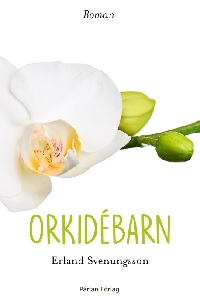 Only 110 pages. Small on earth, big in order. This is how Erland Svenungsson’s new book Orchid Children can be characterized. An elaborate language provides an intensive meeting with the reader. Why do I ask? Is it because we both are at an age when we sum up why we became who we became – based on young years with the question Who am I.
Only 110 pages. Small on earth, big in order. This is how Erland Svenungsson’s new book Orchid Children can be characterized. An elaborate language provides an intensive meeting with the reader. Why do I ask? Is it because we both are at an age when we sum up why we became who we became – based on young years with the question Who am I.
Take a pinch from Ingmar Bergman’s Smultron place with the professor’s trip to childhood. Relieve the anxiety of Pär Lagerkvist’s Guest in reality . Take the epic from Sven Delblanc’s Hedeby if anyone remembers the books and the TV series. Otherwise go to our longest TV series, Home to the Village written by Bengt Bratt. The bridge leads to Orchid children, for Erland is a master of the language.
Like Delblanc and Bratt, we are bond sons who lost their temper a little. Despite the academic, we remain in the boots on the team yard. Erland on the farm Kvatroneröd a few kilometers north of Svenshögen. I’m on a farm two miles south of the station community, now as a half-time dreamer. Born there when the war started, he at the end of the war – shortly before poles shoes from the concentration camps were taken care of at the sanatorium. A few kilometers north of Kvatroneröd, thousands of German soldiers were interned at Backamo . A slumbering idyll stuck internationally in the eye of the storm.
A community with a couple of shops, the café and the Bohusbanan waiting room as meeting places for the farms around. Stins, quartersman and nodes like in Hedeby. At the top of the pyramid, Dr. Forsgren. Not goods and castles like in Delblancs Sörmland but with sanatorium as a waiting room for death. First for the TBC sufferers, then as a nursing home where my parents died. Finally, society died. The sanatorium is deserted, SJ’s waiting room has boomed, the shops and the coffee shop have long since gone. In the farms we left, new ones moved in with sheep and horses grazing on the grounds.

No more than two lines in Wikipedia for Erland are happy to stay under the radar. “ Arne Albert Erland Svenungsson, born on June 2, 1944 in Grinneröds parish, Uddevalla, is a Swedish writer, pastor of the Swedish Church and psychotherapist. For over 20 years he was the director of Lilleskog’s self-care institute outside Alingsås ” . Not far from Ödenäs, the parish where television recorded Hem to the village.
I am not visible at all in Wikipedia, despite constant loading after confirmation. One should not exalt himself, so the ancients said in my old church hometown. With a master’s degree, I as a mason both swarm around and hostage the academic . After the real I worked in the yard because dad had broken his leg. Without a compass after the student, I drove a tractor on a cargo near the Vagnhärad that Delblanc calls Hedeby.
In Svenungsson, I recognize my own trace of life. From the folk high school he continued at the social college. With many priests in the family, it seemed natural to become a priest. Self-care led to schooling as a profession. therapist. Three academic degrees without having taken the real and the student.
Emil in Svenshögen
Orchid children offer a meeting between the writer and me who reads. Was my life like the pinball game at Svenshögen? Was the bullet controlled by chance or by pressing the buttons? How in early years were we pushed into reality? As an ancient postilla, Erland’s book leads to reflection.
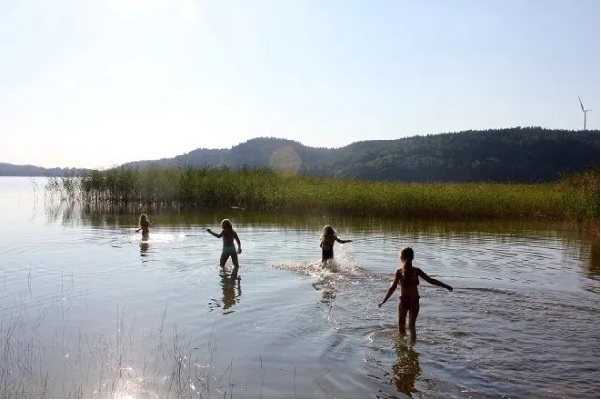
I write this from the farmhouse cut from the farm I grew up in – as a copy of Emil in Lönneberga, my mother claimed. A marvelous peace fills my interior. Hear the noise from the brook and feel the trout splash in my hand, the pasture where I flocked home the cows to the milk, freshly beaten trout full of strawberries , in the mouth frosty blackberries from the strings below the yard, in the nose moist the nausea from the reeds by the lake. It makes my life rich.
As in Marcel Proust’s novel På Spaning after the time of relocation. There he dips a madeleine cake in lime blossom and his whole childhood world comes to life for his inner gaze. Erland’s book gives a taste to my madeleine cake.
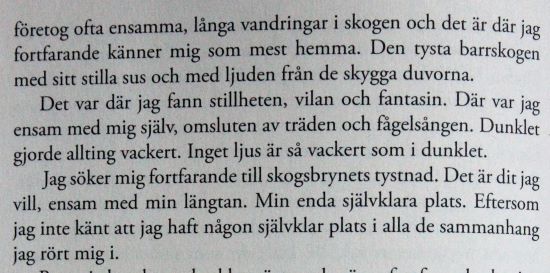
 Alone Emile in me played pilot up in the lime outside the porch. Wooded in a glade by the creek. Most scents and colors are stuck. The smell of soil when the first potato was picked up. Shining beetles in the beetle ring. Break with weak drink behind the hat. The jumping between flying humming sucks on the team yard. That is why Erland’s book feels familiar.
Alone Emile in me played pilot up in the lime outside the porch. Wooded in a glade by the creek. Most scents and colors are stuck. The smell of soil when the first potato was picked up. Shining beetles in the beetle ring. Break with weak drink behind the hat. The jumping between flying humming sucks on the team yard. That is why Erland’s book feels familiar.
eXILE
We peasant boys left the village’s confinement for something else. For some as radical pessimists, such as Bengt Bratt and the literature teacher Sven Delblanc. Too stubborn to submit to a career in an authoritarian order But at the same time restrained in a destructive freedom.
 Thomas Thorild grew up the farm Toröd on Lake Bullaren in Bohuslän. Schooled in Kungälv and Gothenburg.
Thomas Thorild grew up the farm Toröd on Lake Bullaren in Bohuslän. Schooled in Kungälv and Gothenburg.
After the murder of Gustaf III, Thorild was banished to Pomerania for the radical pamphlets with demands for freedom of expression. Something that banned democracy and feminism. Above the gate to Uppsala University’s hall is Thorild’s motto ” Thinking freely is great but thinking right is bigger” . A motto also for contemporary peasant sons brought to Lutheran ready-to-work authority.
The movie She Danced One Summer was seen by three million only in Sweden and even more abroad. Not just for naked breasts. but for the youth’s struggle against the schartautrogen priest. The film was not recorded at Dalsland but in Ödenäs outside Alingsås.
The film is based on the valley farmer Per Olof Ekström ’s book The Summer Dance. It became a bestseller in 1950 in the same vein as Olle Länsberg published the book Barnatro , based on his childhood with the unfaithful grandparents on a farm in Ucklum.
Ekström wrote amputated war papers on state agricultural policy and went bankrupt as a farmer – before voluntarily fleeing to dictatorship Romania. Länsberg was also cracked and became a farmer who farmed. After a couple of turns in Castros Cuba, he sold books in markets. Thinking freely at the time, when musty writing threatened decency.
The scars
From Orchid Children:

The aging skin almost hides my scars. One over the kneecap after an ax. A long palm because a dog chased me into the barbed wire. On the finger knuckle, the mark for the knife appears as slanted as I counted a bark boat. The pocket knife, purchased in New York, was a Christmas present from our neighbor, who was a helmsman on an America boat.
It could have been worse. We cut firewood dangerously close to the unprotected saw blade. Also, I had to crack up the twine before the sheaves went into the throttle. The straps that operated the threshing mill were as insidious as those for the pit mill with the perpetual grinding. As a six-year-old, it was important not to fall off the ring roll, at least not in front. To beware of the hoofs we knew. In a way, we felt adults before the age of ten. Parents with a lingering 19th century nurtured us with love. That the latter came to be called child labor was not a consideration. From the book:
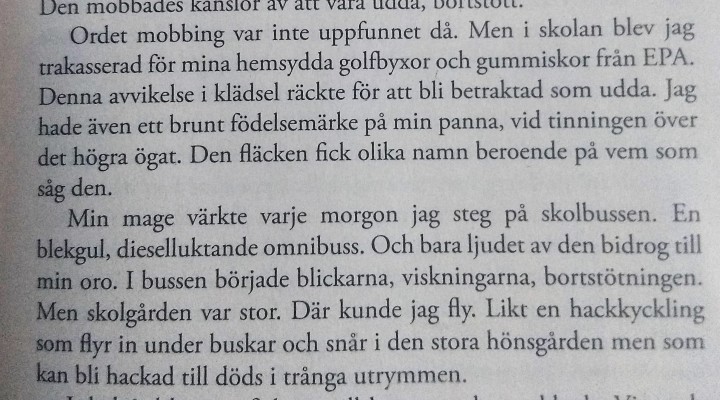
Erland had to get up early to catch up with the goals in the team yard before taking the bus to the high school in Ljungskile. Maybe the smell of clothes was in the clothes and the religious didn’t make it any better. For me, bullying is hard to understand. Well-kept yard with gentlemen’s house. Father Arne was county councilman for the Right and then sat in parliament. What gave prestige in the countryside did not sound so high in the fish-famous seaside resort of Ljungskile.

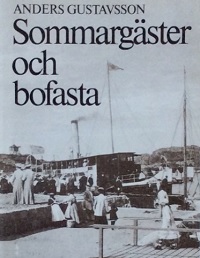 Another farmer’s son, the ethnography professor Anders Gustavsson in Tegneby on Orust, has illuminated the cultural crock in ”Summer guests and residents: cultural meeting and contradictions on the housing shore”. Erland runs a gray Fergus contractor outside the cottage on Orust. Even Gustavsson is ambivalent, he shares his time on family farm to be emeritus at Oslouniverisitetet.
Another farmer’s son, the ethnography professor Anders Gustavsson in Tegneby on Orust, has illuminated the cultural crock in ”Summer guests and residents: cultural meeting and contradictions on the housing shore”. Erland runs a gray Fergus contractor outside the cottage on Orust. Even Gustavsson is ambivalent, he shares his time on family farm to be emeritus at Oslouniverisitetet.
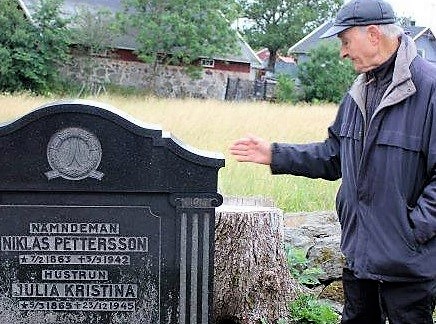
Chickens with poor grades or ugly ducklings? Erland and HC Andersen have something in common. Eighteen years old he left the farm work and applied to the folk high school in Ljungskile. The teacher, Gunnar Edman, probably saw a swan in Erland, suitable for attending the Social Academy in Gothenburg. Maybe it was for the printer talent. As a poet, the teacher was close friends with Thomas Tranströmer and Harry Martinsson.
I was not directly bullied by my high school friends in Uddevalla. But like traveling a little side by side. In the yard there was no time for ball sports and scouting even if there was one in Svenshögen. Even smaller gym and handball, which was the case in Uddevalla.
My bully in high school was the math teacher, who in a comparison made me see Ingmar Bergman’s Caligula in the movie Hets as pretty decent. He did not, as our lecturer, spit tobacco-colored toys in the corner of the classroom. For me, blackout is constantly on the blackboard when numbers would be counted, despite decent grades in the subject. Still, I continued the real line’s mathematical branch of pure spite. Passed the three years despite gastric and migraine, which then became a lifelong plague. Was it the hatred of the devil and the sweetness of revenge that made me want to speak to audiences later in life?
Erland’s creativity is born out of high sensitivity, hence the title Orchid Child. Can my survival strategy be explained in the opposite? To encapsulate emotions and escape into the future?
Role models

My Swedish teacher Rune Ekre made me read Pär Lagerkvist’s Guest at reality . It seemed tedious and boring until I was sucked into the moods of a child, low-key like Erland. Smålänning Lagerkvist can be counted as Bohuslän. He married a rescue daughter from Uddevalla and lived at Tjörn from time to time.
In Guest of Reality, the steam smoke on the railway station and the scent of meadow flowers on the way to Grandma’s felt. To pull away is recognized, as when Pär hid in the station’s coal basement. The book Anders fear that grandma and others in the family will die. Death anxiety caused Lagerkvist to oscillate between the home’s old-fashioned Christianity and a watered down doubt, though not to what exactly.
I remember Rune Ekre as a mentor. The family settled in Svenshögen not far from Erlands Kvatroneröd. Ekre and Gunnar Edman were both religious and known for sad morning prayers. Ekre was a farmer’s son from the Jönköping district. Maybe he saw something in the shy peasant boy from Svenshögen. My essay came in the school’s Christmas magazine and he made sure that I got a role in the play that was played in the Little House of the People’s House.
Ekre dug out former Lödöse and headed the museum. He documented the medieval period in a number of writings, some of them church-related. Edman wrote some thirty books about an anxious longing for the meaning of life, in the boundary between science and spirituality. As with the religious doubter Pontus Wikner – farmer from the Munkedal district, who was forced into Kristiania to get a professorship in philosophy.
Girls

The headstone in Svenshögen remains at the house, which was Larsson’s grocery store. But not the Gulftapp next to where the gasoline was hand pumped to a glass cylinder. More and more people drove a car in 1960, but most people did not stop at the shop, even to fill the tank. Erland had filled a mop that year and tanked his King both once and twice a day. Not because it was needed but for the girl at the checkout. An annoying wordless romance, nothing more than stole glances. From the Orchid Book:
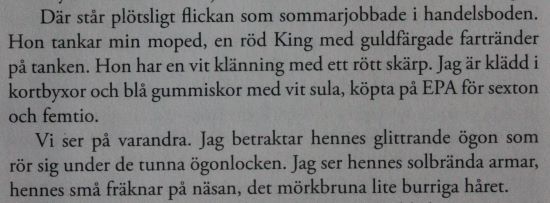
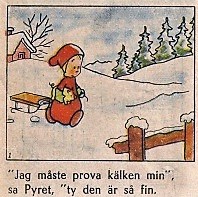 In a drawer I have a photo of Pyret she was called, maybe for the braids. Or if it was for the series in the newspaper Lyckoslanten. The children’s romance in the fourth grade of the village school grew into a dream. Before the confirmation, they were expected to attend the church. I made sure to sit in the bench on the men’s side alongside the bench where she sat on the women’s side. It wasn’t more than a glance over the hallway, but the memory remains.
In a drawer I have a photo of Pyret she was called, maybe for the braids. Or if it was for the series in the newspaper Lyckoslanten. The children’s romance in the fourth grade of the village school grew into a dream. Before the confirmation, they were expected to attend the church. I made sure to sit in the bench on the men’s side alongside the bench where she sat on the women’s side. It wasn’t more than a glance over the hallway, but the memory remains.
Was it for my shyness or hopeless dance style that I was not invited to the ladies? Being lost at events I have in common with Erland.
Is it that we lose sight of the happiest marriage? With affirmative woman patching a fragile self-confidence. At least for me with a wife who thawed my inner life. Constantly together who joined Karlsson’s adhesive. Are Erland and his Lise-Lottie a Karlsson sticker pair? It seems so.
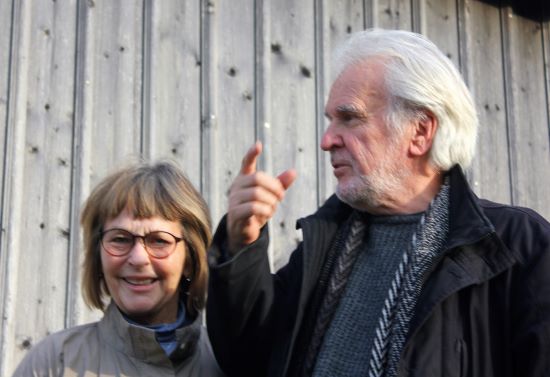
Prällarna
A priest who does not pallet and is allowed to drive by ambulance to the emergency room. Erland is fictitiously unique in finely portraying high sensitivity. With panic anxiety but at the same time a gift for creativity. The book is a healing ointment for others worried but also for me.
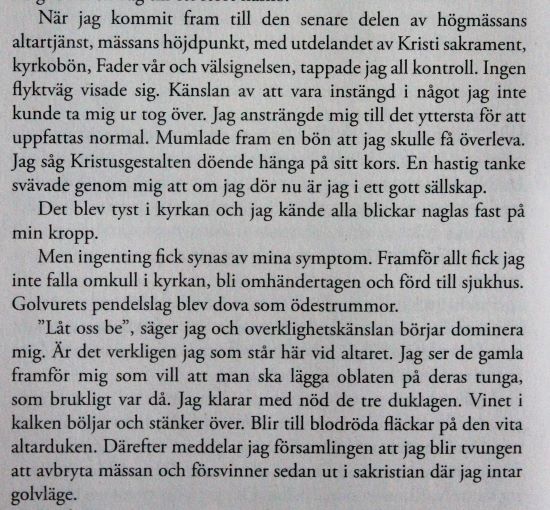
Instead, Deaconess became Erland’s way of reaching people. In the book, no godliness is preached, but it is filled with humanity. Not a wrestling with the Schartauan heritage as with the relative Eskil Franck from Uddevalla. He was envisaged as an archbishop before the discharge of the priesthood.

Eskil Franck’s father Gerhard was in Uddevalla church pastor of the old tribe. Disciple of Schartau was also grandfather Otto Franck, the priest in Ödmål who hiked to Svenshögen to preach at the sanatorium. His daughter married Erland’s uncle, the priest Gunnar Svenungsson. They became parents of cousin Henrik Svenungsson, the Stockholm bishop who wed the royal couple.
My little school girls, who are said to have sent congratulatory telegrams to Hitler, saved us in the faith of Adam and Eve and other Old Testament. The older ones could catechize, so the questions we had left children in the house interview.
We knew that brown-colored church values of the countryside’s young people had their farm driveway strewn with spruce and broken peaks on two fir trees along the way – according to the village’s custom. It happened the night after Hitler was reported dead. The school class sat on the booth when Pastor Ivar Rhedin walked in the priest’s train as an officiant. That he became known as a notorious Nazi in the Gothenburg Diocese was no obstacle.
Erland also grew up in an anti-Nazi home but we made different choices. For me it was a relief to leave the encroached church. I lack faith but pay the church tax kindly to the good works of the congregation. The church is like the wounds on my knees, annoying but that I have to peel on.
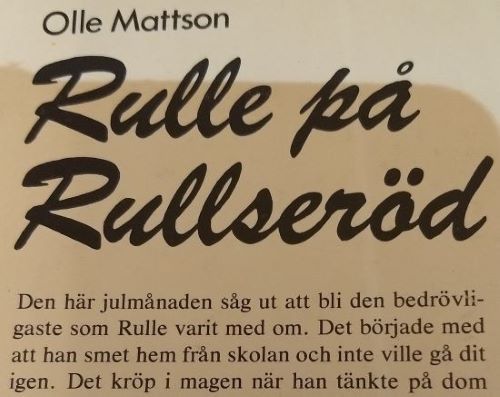
During Christmas Eve, we were scolded by the pastor because we rarely went to church. In Grinneröd’s Christmas Gala, Erland saw the author Olle Mattson , who lived in Hällesdalen with the postal address Svenshögen. He is best known for the youth book Briggen Tre Liljor . Bondsonen Matsson was the father of the television advent calendar Rulle in Rullseröd in 1974. Strulige Rulle would rather take part in Christmas preparations at Bohuslänsk farm than go to school.
In Branseröd a few kilometers from Kvatroneröd, Olle Matsson’s daughter Ellen writes books that merit her to the Swedish Academy – on the chair provided by theology professor J ayne Svenungsson from Intagan in Hjärtum. Jayne is the grandson of the parish’s foremost painter, the farmer Manfred Svenungsson .

In Glädjestranden , Matsson tells of a girl in a 19th-century farm, which seems to be Grötån. One critic called it Bohusläns Hemsöborna . A teenage girl discovers a mysterious family in the Summer game , also an environment at Hakefjord.
The waiting room of death
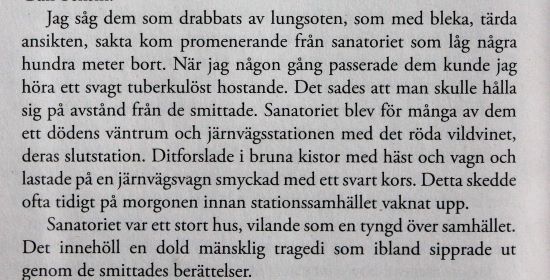
My grandmother’s siblings were in the sanatorium. We played outside and sat with the patients in the hospital bio. Queued together in the two stores where it was sold over the counter. But even though I was first vaccinated when I was nine, there was never any talk of infectious risk. Death lay in wait in the countryside. Some got the last rest at Ucklum’s cemetery or the desert cemetery if they were Jews.

The church books show that many in the past died of pneumonia. I was hit in a couple of rounds at the age of ten and got in the ham new drug penicillin. The syringes were given by the sanatorium’s doctor Frendler, who brought the sick poles from the camps.
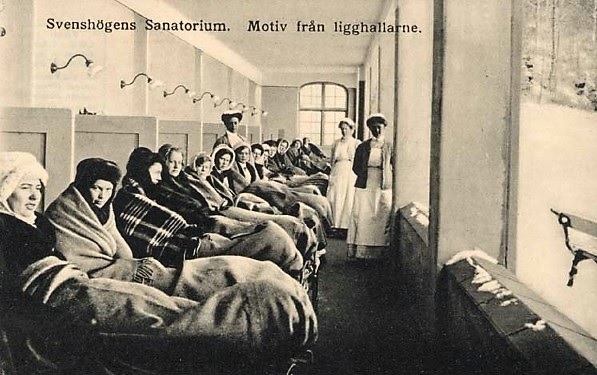
In the patient association’s Christmas magazine Hällungen 1961, there is the novel Lost son of Harry Martinson, who was also cared for in the sanatorium for tuberculosis. He felt the fear of driving a car. Like when he left Trollhättan in 1960 to his friend Gunnar Edman in Ljungskile.
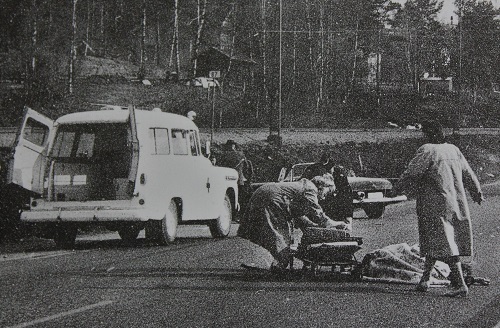
Fear of fear existed. That summer, thirteen people in national road traffic died two miles past Ljungskile. Martinson received staggering reviews for the poem collection Vagnen the same year . The book hostages the sacred car. “About the summer evening when the well-known beetle collection runs out through customs on the way to destination or traffic death, ” says a sentence. The critics envied Martinson the Nobel Prize awarded by the Academy where he sat. The depression escalated and he began harakiri four years later.
deadpan
 My grandfather was in the sanatorium annex in the summer of 1948; remembers the visits just before he died. I wanted to attend the funeral but did not get. The memory of the cars with the funeral train that passed on the road below the school remains.
My grandfather was in the sanatorium annex in the summer of 1948; remembers the visits just before he died. I wanted to attend the funeral but did not get. The memory of the cars with the funeral train that passed on the road below the school remains.
After all, I had read to him from the Bible. Because in faith he was characterized by the Schartauan. Biblical pre-eminence was required to enter the kingdom of heaven. My grandmother was hesitant because I was interested in more naked people among snakes in Gustave Doré’s engraving. More sexual information than I did not get.
My parents died at the sanatorium when it was changed to a nursing home. The sick visits before aroused memories of ether and echo from conversations heard all the way to the doctor’s waiting corridor. The cancer could be painful, but it was a kind of peace in the sick room. Mother and father knew the assistants from before. Through the window, the Hällungen saw me stretch out towards my parents’ yard.

Death is Erland’s companion through life. On one shoulder is his anxiety. On the other is a supporter for others. Both as a pastor at funerals and fellow human beings in therapy at the Swedish Medical Institute. In the book Butterfly Child, he has a conversation with big brother during his last night of life.

Is my distancing from death an escape from emotion or is it a survival strategy? In a deathbed, thoughts flee to something else. The grief is inside but does not show it at the funeral. Keeping a speech doesn’t go, it’s too personal. Big brother doesn’t cry.
“How do we want to be taken to our last rest, and how can we really make sure that our surviving relatives really do their job and scatter the ashes in the sea off Orust? What if they only open the window when it rains instead? ” The recognition made the audience laugh in the humor show Death – on the other side, are you ready? Comedian Peter Apelgren is expecting a cute place beyond. The wife Anna Mannheimer, like me, thinks that death is thanks and hey, the party is over. Peter grew up in Ucklum (where Svenshögen belongs).
I am not religious and do not believe in eternal life. But live the present as it is forever. Does not fill in the White Archive. Death cleaning sounds awkward. Becoming a widow is something I fear more than my own death. With my roots I wish for burial while my wife prefers memory grove. The compromise is supposed to be ash pit.
Marvelous how a book like Orchid Children brings to mind one’s self. And dare to admit them.
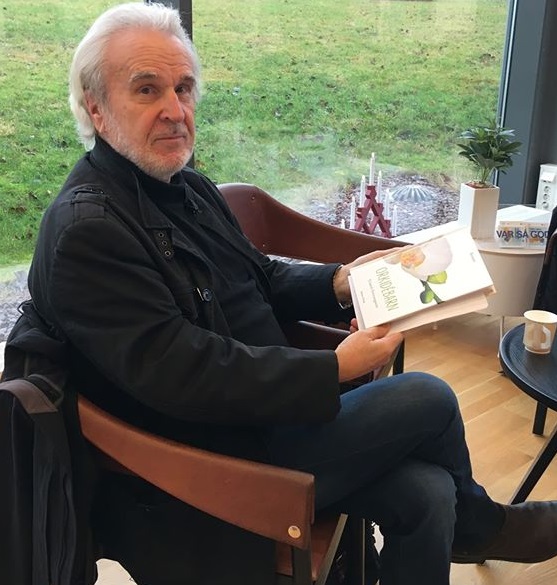
Books
- Erland Svenungsson. orchid Children
- Erland Svenungsson, The Butterfly’s Secret ’ Taste
- Erland Svenungsson. Once on Earth: fifteen letters to a son
- Eskil Franck. Give me, my son, your heart
- Ellen Matsson Summer game. SAMPLE
- Ellen Matsson. The beach of joy . Sample .
- Olle Matsson. Roll on Rulseröd
- Rune Ekre. Pilgrim and pilgrimage .
- Gunnar Edman. The child carries the adult
- Per Olof Ekström. she danced one summer
- Olle Länsberg. Childlike
- Pär Lagerkvist. A guest of reality
- Harry Martinsson. Dipper
- Pontus Wikner. The history of philosophy
- Thomas Thorild. Collected writings
- Anders Gustavsson. Farmer culture in the face of academic cultures in Sweden and Norway
/ By Ingemar Lindmark